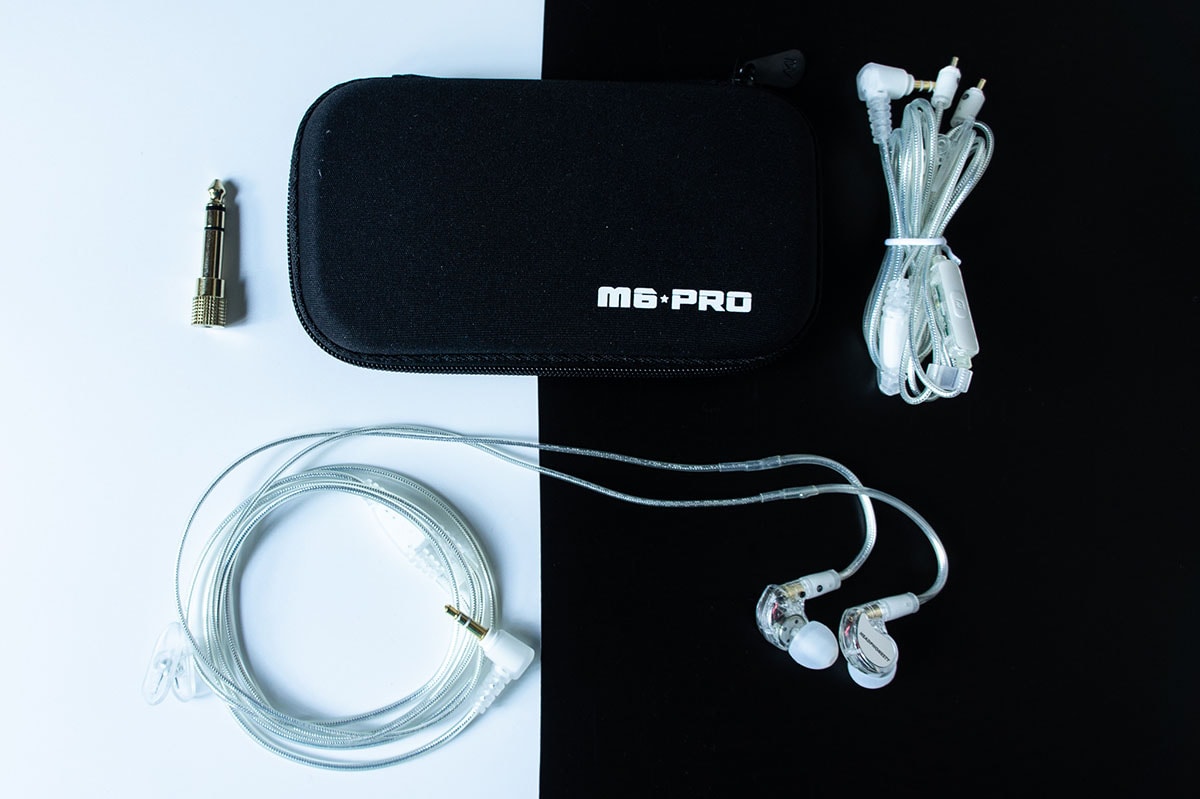Home>Instruments>Drums>How To Write Drums In Guitar Pro 6


Drums
How To Write Drums In Guitar Pro 6
Published: February 7, 2024
Learn how to write and edit drum tracks in Guitar Pro 6 with our step-by-step guide. Create dynamic and authentic drum sounds for your music compositions. Start drumming today!
(Many of the links in this article redirect to a specific reviewed product. Your purchase of these products through affiliate links helps to generate commission for AudioLover.com, at no extra cost. Learn more)
Table of Contents
Introduction
Creating drum tracks in Guitar Pro 6 is an essential skill for any musician or songwriter looking to produce professional-quality music. With its intuitive interface and powerful features, Guitar Pro 6 provides a versatile platform for composing and arranging drum parts with precision and creativity. Whether you're a seasoned drummer or a guitarist venturing into the world of percussion, mastering the art of writing drums in Guitar Pro 6 can elevate your musical compositions to new heights.
In this comprehensive guide, we will explore the step-by-step process of writing drum tracks in Guitar Pro 6, from setting up the drum track to exporting the final composition. By the end of this tutorial, you will have a solid understanding of how to leverage the software's tools and functionalities to craft dynamic and expressive drum parts for your musical projects.
Throughout this tutorial, we will delve into essential techniques for adding, editing, and refining drum notes, as well as utilizing drum tablature to accurately notate complex rhythms. Additionally, we will cover tips and best practices for optimizing your drum tracks and enhancing the overall sound of your compositions.
Whether you're a solo artist, a member of a band, or a music producer, the ability to write compelling drum tracks in Guitar Pro 6 can significantly enrich your creative process and bring your musical vision to life. So, let's embark on this journey together and unlock the full potential of Guitar Pro 6 for crafting exceptional drum arrangements.
Setting Up the Drum Track
Before diving into the intricacies of writing drum parts in Guitar Pro 6, it’s crucial to set up the drum track with the appropriate settings and configurations. This initial step lays the foundation for the entire drum composition, ensuring that the subsequent note input and editing processes align with your musical intentions.
To begin, launch Guitar Pro 6 and create a new project or open an existing one. Once the project is loaded, navigate to the instrument panel and select the drum kit from the available instrument list. Guitar Pro 6 offers a diverse range of drum kits, allowing you to choose the one that best complements the style and genre of your composition. Whether you prefer the punchy sound of a rock kit or the crisp tones of a jazz kit, selecting the right drum kit is pivotal in shaping the overall sonic character of your drum track.
After choosing the drum kit, it’s essential to configure the time signature and tempo to reflect the rhythmic framework of your composition. Utilize the time signature tool to set the appropriate meter for your drum track, whether it’s a common 4/4 time signature or a more intricate rhythmic pattern. Additionally, adjust the tempo to establish the desired speed and feel of the drum arrangement, ensuring that it aligns harmoniously with the other instruments in the project.
Furthermore, consider customizing the drum track’s visual layout and notation style to enhance readability and clarity. Guitar Pro 6 provides various options for displaying drum notation, such as standard drum notation or drum tablature, allowing you to choose the format that resonates best with your musical preferences and workflow.
By meticulously setting up the drum track in Guitar Pro 6, you pave the way for a seamless and efficient drum writing process, enabling you to focus on crafting expressive and impactful drum parts without technical hindrances.
With the drum track primed and ready, we can now proceed to the next phase of our journey: adding compelling drum notes to bring the composition to life.
Adding Drum Notes
Once the drum track is configured in Guitar Pro 6, the next step is to add drum notes that define the rhythmic structure and groove of the composition. Whether you’re aiming for thunderous fills, intricate patterns, or subtle accents, Guitar Pro 6 equips you with the tools to input drum notes with precision and creativity.
To add drum notes, access the drum track within the software’s interface and select the desired note duration from the note palette. Whether it’s quarter notes, eighth notes, or more complex rhythmic values, Guitar Pro 6 offers a comprehensive array of note durations to accommodate diverse musical styles and rhythmic intricacies.
With the note duration selected, simply click on the drum staff at the desired position to input the corresponding drum note. As you input drum notes, you can seamlessly switch between different drum instruments within the drum kit, allowing you to layer diverse sounds and textures to enrich the rhythmic tapestry of your composition.
Furthermore, Guitar Pro 6 provides intuitive methods for inputting drum rudiments and articulations, enabling you to infuse your drum parts with expressive dynamics and nuances. Whether it’s adding flam strokes, drags, or rolls, the software empowers you to articulate your rhythmic ideas with authenticity and depth.
As you add drum notes, leverage the software’s playback feature to audition the drum track in real time, allowing you to assess the rhythmic flow and dynamics of the composition. This interactive feedback loop enables you to fine-tune the drum parts and make adjustments to achieve the desired rhythmic impact and musical expression.
Moreover, Guitar Pro 6 offers robust quantization tools that facilitate the alignment of drum notes to the grid, ensuring rhythmic accuracy and cohesion within the composition. Whether you opt for strict quantization or seek a more humanized feel, the software’s quantization options empower you to refine the rhythmic precision of your drum arrangement.
By adeptly adding drum notes in Guitar Pro 6, you can sculpt captivating rhythmic landscapes that elevate the sonic identity of your compositions. With the rhythmic foundation established, we can now explore techniques for editing and refining drum parts to further enhance the musical narrative.
Editing Drum Parts
Once the initial drum notes are inputted in Guitar Pro 6, the process of editing drum parts becomes instrumental in refining the dynamics, articulations, and overall impact of the drum arrangement. Whether it involves adjusting velocities, fine-tuning note durations, or implementing stylistic variations, the software offers a comprehensive suite of editing tools to sculpt the drum parts with precision and artistry.
One of the key aspects of editing drum parts in Guitar Pro 6 is manipulating the velocities of individual drum notes to shape the dynamics and intensity of the performance. By adjusting the velocities, you can imbue the drum parts with subtle nuances and accents, enhancing the expressiveness and realism of the rhythmic patterns.
Furthermore, the software enables you to modify note durations, allowing you to tailor the rhythmic phrasing and groove of the drum parts to align seamlessly with the musical context. Whether it involves elongating a snare hit for emphasis or shortening a hi-hat pattern for rhythmic tightness, the ability to edit note durations empowers you to craft compelling and cohesive drum arrangements.
Moreover, Guitar Pro 6 provides a wealth of articulation options for drum notation, including accent marks, ghost notes, and various stylistic embellishments. Leveraging these articulations, you can infuse the drum parts with nuanced expressions and rhythmic intricacies, elevating the overall musicality of the composition.
Additionally, the software’s editing capabilities extend to drum tablature, allowing you to modify the tablature layout and appearance to suit your preferences and optimize the readability of the drum notation.
As you refine and edit the drum parts, utilize the software’s playback feature to audition the composition in real time, enabling you to evaluate the impact of the editing decisions and make iterative adjustments to achieve the desired sonic outcome.
By adeptly editing drum parts in Guitar Pro 6, you can sculpt dynamic and evocative drum arrangements that resonate with musical authenticity and precision. With the rhythmic elements finely tuned, we can now explore the utilization of drum tablature as a valuable resource for notating and communicating complex rhythmic patterns.
Using Drum Tablature
Drum tablature serves as a valuable notation system for accurately representing drum patterns and rhythms in a concise and easily interpretable format. In Guitar Pro 6, the utilization of drum tablature provides an efficient means of notating complex rhythmic structures and communicating drum parts with clarity and precision.
When working with drum tablature in Guitar Pro 6, you can seamlessly switch between standard drum notation and tablature views, allowing for versatile representation of drum parts based on your preferences and the specific requirements of the musical arrangement.
One of the distinct advantages of drum tablature is its intuitive visualization of drum kit components, enabling you to delineate distinct voices and articulations within the rhythmic patterns. Whether it’s depicting intricate drum fills, syncopated grooves, or polyrhythmic motifs, drum tablature offers a succinct and comprehensible means of capturing the rhythmic intricacies of the drum arrangement.
Furthermore, Guitar Pro 6’s support for drum tablature encompasses a diverse range of drum articulations and techniques, allowing you to notate rudiments, ghost notes, rimshots, and various stylistic elements with precision and clarity. This comprehensive tablature system empowers you to communicate nuanced rhythmic nuances and embellishments effectively within the drum notation.
Additionally, the software’s drum tablature interface facilitates seamless editing and manipulation of drum notation, enabling you to refine and optimize the visual layout and presentation of the drum parts to enhance readability and accessibility.
Moreover, the utilization of drum tablature in Guitar Pro 6 extends beyond notation, serving as a valuable educational resource for drummers and music enthusiasts seeking to analyze and learn intricate drum patterns. The tablature format provides a user-friendly platform for studying and interpreting drum arrangements, fostering a deeper understanding of rhythmic structures and drumming techniques.
By leveraging drum tablature in Guitar Pro 6, you can effectively notate, communicate, and comprehend the rich tapestry of drum rhythms, enriching the musical experience and facilitating seamless collaboration in musical projects.
Exporting the Drum Track
Upon crafting and refining the drum arrangement in Guitar Pro 6, the final step involves exporting the drum track to various file formats for seamless integration with other digital audio workstations (DAWs) or sharing with collaborators. The software offers a straightforward and versatile export process, enabling you to preserve the integrity of the drum composition and facilitate its inclusion in broader music production workflows.
Guitar Pro 6 provides a range of export options, allowing you to export the drum track as audio files, MIDI data, or in proprietary Guitar Pro file formats. This flexibility empowers you to tailor the export to suit the specific requirements of your production environment or the preferences of your collaborators.
When exporting the drum track as audio, Guitar Pro 6 enables you to render the drum arrangement into high-quality audio files, such as WAV or MP3, preserving the sonic nuances and dynamics of the drum performance. This export format is ideal for integrating the drum track into audio production software or sharing the composition as a standalone audio reference.
Alternatively, exporting the drum track as MIDI data provides interoperability with a wide array of music production platforms and virtual instruments, allowing for seamless integration of the drum arrangement into diverse digital audio workstations and MIDI-compatible hardware devices. The MIDI export functionality ensures that the rhythmic intricacies and articulations of the drum composition are faithfully preserved for further manipulation and enhancement in external music production environments.
Furthermore, Guitar Pro 6’s proprietary file format export retains the comprehensive musical data of the drum track, including notation, tablature, and performance details, facilitating seamless collaboration and exchange of compositions among users of the software.
Additionally, the software’s export settings allow for customization of audio and MIDI parameters, such as sample rate, bit depth, and MIDI channel assignments, ensuring that the exported drum track aligns optimally with the intended production context and technical specifications.
By leveraging Guitar Pro 6’s robust export capabilities, you can seamlessly integrate the drum track into your music production workflow, collaborate effectively with fellow musicians, and share your compositions with the world, thereby realizing the full creative potential of your drum arrangements.











